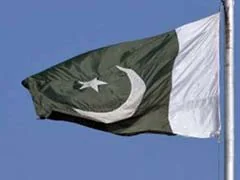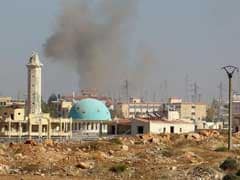At least eight people have died in an earthquake that struck Japan on New Year’s Day as authorities Tuesday struggled to assess the full extent of the disaster that wrecked buildings, roads and left thousands without power in freezing temperatures, news agency Reuters reported.
After a 7.6 magnitude earthquake, subsequent aftershocks and tsunami waves about 1 metre high hit Japan’s western seaboard in the middle of the afternoon on Monday, residents in some coastal areas flee to higher grounds.

About a thousand army personnel have been dispatched to the worst-hit area in the country’s relatively remote Noto peninsula, however, according to news agency Reuters, rescue operations have been hindered by badly damaged and blocked roads.
Many returned to their homes on Tuesday as authorities lifted tsunami warnings, but almost 33,000 households remained without power in Ishikawa prefecture, according to Hokuriku Electric Power’s website. Most areas in the northern Noto peninsula also have no water supply, public broadcaster NHK reported.
One of the area’s airports has been forced to close due to runway cracks. Many rail services and flights into the area have also been suspended. Reuters, quoting the transport ministry, reported four expressways, two high-speed rail services, 34 local train lines and 16 ferry lines as halted, while 38 flights cancelled since the quake hit.
“The search and rescue of those impacted by the quake is a battle against time,” Prime Minister Fumio Kishida said during an emergency disaster meeting on Tuesday in remarks aired on television.
“We must rescue them as quickly as possible, especially those who are trapped under collapsed structures,” Kishida emphasised. The PM also postponed his New Year visit to Ise Shrine scheduled for Thursday.
As of Monday night, the Japanese government had ordered more than 97,000 people in nine prefectures on the western coast of main island Honshu to evacuate. They spent the night in sports halls and school gymnasiums, commonly used as evacuation centres in emergencies.
Japanese local media reported more than a dozen confirmed deaths so far, mainly in the hard-hit town of Wajima near the quake’s epicentre, whereas the fire and disaster management agency reported 19 people to be in a state of cardiac arrest. In nearby Suzu, some doctors were unable to reach a hospital that was relying on a backup generator for power.
More than 90 tremors have been detected since the quake first hit on Monday, according to the Japan Meteorological Agency. The agency has warned more strong shocks could hit in coming days.
The quake comes at a time when Japan’s nuclear industry has faced fierce opposition from locals since the 2011 earthquake and tsunami triggered nuclear meltdowns in Fukushima.
The Nuclear Regulation Authority mentioned no irregularities were found at nuclear plants along the Sea of Japan, including five active reactors at Kansai Electric Power’s Ohi and Takahama plants in Fukui Prefecture. Hokuriku Electric’s Shika plant, the closest to the epicentre, moreover, had already halted its two reactors before the quake for regular inspections and saw no impact from the quake, according to the authority.
President Joe Biden, in a statement, said that the United States was ready to provide any necessary help to Japan after the earthquake. “As close allies, the United States and Japan share a deep bond of friendship that unites our people. Our thoughts are with the Japanese people during this difficult time,” he said.
Disclaimer: The copyright of this article belongs to the original author. Reposting this article is solely for the purpose of information dissemination and does not constitute any investment advice. If there is any infringement, please contact us immediately. We will make corrections or deletions as necessary. Thank you.







